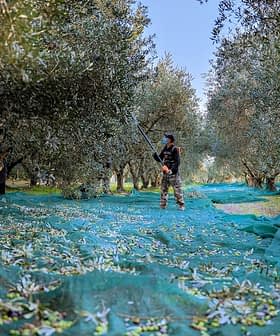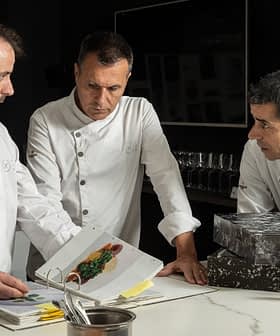The L’Huile d’Olive de Corse-Oliu di Corsica is a PDO product and a source of pride for the inhabitants of the French region. But olive oil of Corsica must not be considered as only one.
The Union of Producers, announced at the “Agriculture Exhibition” meeting in Paris this week, that olive oil of Corsica will be classified from now on in two different types: récolte sur l’arbre (harvested on the tree) and Old Stykle (harvested the old way). Each product will be labeled according to the harvest process .
The first type is obtained by pressing olives collected directly from the tree. The olives are fresh, with a flavor of almond, artichoke or tomato, according to the union.
The second type is an olive oil extracted from fruits that have fallen down from big old trees, too high to allow manual or mechanical collection being; they are often 15 – 20 meters high and hundreds of years old.
From those natural giants olives fall naturally and are collected in nets lying on the ground. It is an old method that takes several months, said Antoine Santoni, a producer from Southern Corsica who said operations could finish in the month of June.
The taste of the olive oil obtained the “old way” is, of course, sweeter and has notes of black, ripe olives.
Once fallen in the nets, the olives need to be milled in less than nine days, added Santoni.
Research has shown, however, that allowing the olives to ripen to the point of falling and waiting days before pressing them are not ideal conditions for obtaining high-quality extra virgin olive oils
Those big trees and the traditional harvesting methods are considered parts of the rich heritage of the island that Corsicans want to preserve.
The harvest distinction is a voluntary one for producers and en effort by the Union in response to calls for more transparent and clear label information. The strategy enables producers to inform consumers and tell a bit more of the story behind the product and of their land.
This was a good year for Corsican olive oil. While its Mediterranean neighbors have faced one of the worst harvests of their lives, Corsica, the sunny, wild island in the Ligurian Sea, was an exception. 170 tons was the total output of annual olive oil production. A 21 percent growth over the average production of the island.








